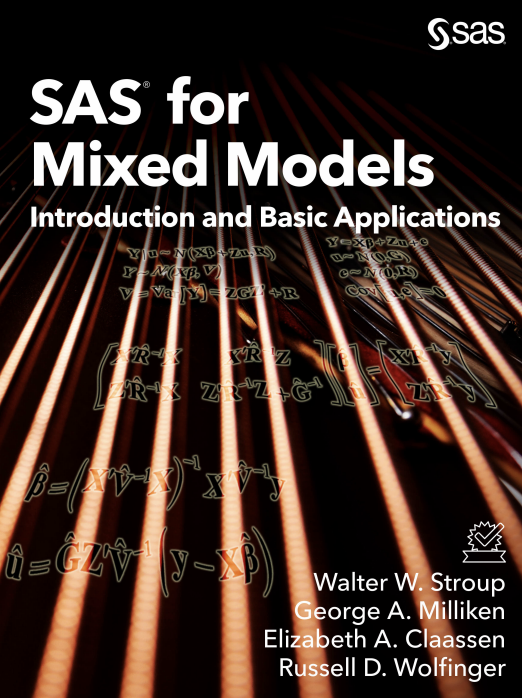 We asked Austin Lincoln, a technical writer in the SAS Documentation Group with a penchant for statistical modeling, what he thought about the recently published rework of the classic: SAS® for Linear Models, Fourth Edition, and SAS® for Mixed Models, Second Edition, into a single volume, SAS for Mixed Models: Introduction to Basic Applications. This is what he had to say:
We asked Austin Lincoln, a technical writer in the SAS Documentation Group with a penchant for statistical modeling, what he thought about the recently published rework of the classic: SAS® for Linear Models, Fourth Edition, and SAS® for Mixed Models, Second Edition, into a single volume, SAS for Mixed Models: Introduction to Basic Applications. This is what he had to say:
The holiday season is upon us and it’s the time of year where we get to spend time with loved ones – and have the stress of finding the perfect gift for them! There is no perfect formula that can take us through the process of finding that perfect gift; the best we can do is make a somewhat-educated guess, and hope that our intuition will elicit a look of (pleasant) surprise from the recipient.
In the business world, however, making a “somewhat-educated guess” is hardly acceptable when it comes down to making a process effective, efficient, and ultimately productive. Luckily, there exist multiple SAS procedures that are capable of producing predictive models, which means that “somewhat-educated” guesses don’t have to transcend your gift-giving escapades. Better yet? SAS experts have authored a guide called SAS for Mixed Models: Introduction to Basic Applications that will take you step-by-step through the journey of creating such models, and enable you to transform scores of data into actionable insights.

Written with the goal of appealing to and reaching a diverse audience from aspiring statisticians to advanced analysts, and everyone in between, this book wouldn’t be a half-bad stocking stuffer (although if you go that route, I recommend having some heavy duty hooks handy). Taking great care in breaking down even the most basic of concepts, those that are on the “aspiring statistician” end of the spectrum will have no trouble getting a grasp on the key concepts. This is due in part to the fact that SAS for Mixed Models: Introduction to Basic Applications isn’t chocked full of statistical jargon; instead, it puts key information into layman’s terms, and slowly introduces statistical nomenclature as it becomes necessary.
As you navigate SAS for Mixed Models: Introduction to Basic Applications, you will come to think of it as your survival guide when it comes to understanding and creating mixed models. Between the multitude of examples, thorough explanations of concepts, and an entire chapter dedicated to the troubleshooting and diagnostics of mixed models, the only challenge you'll have is the gift wrapping.
For more information of forthcoming titles and exclusive discounts sign up for our monthly newsletter.
